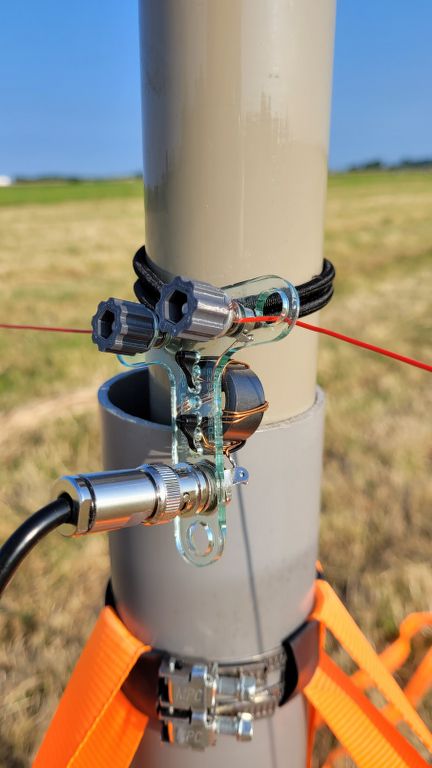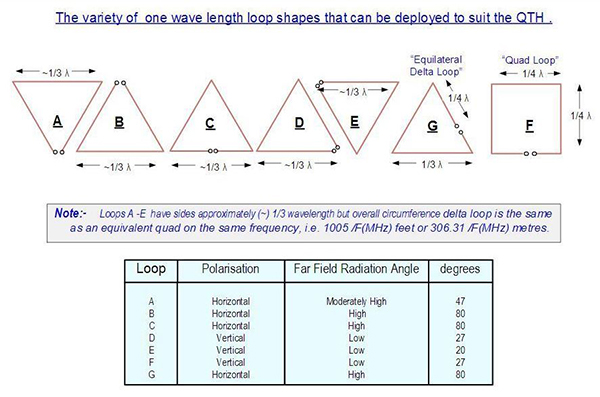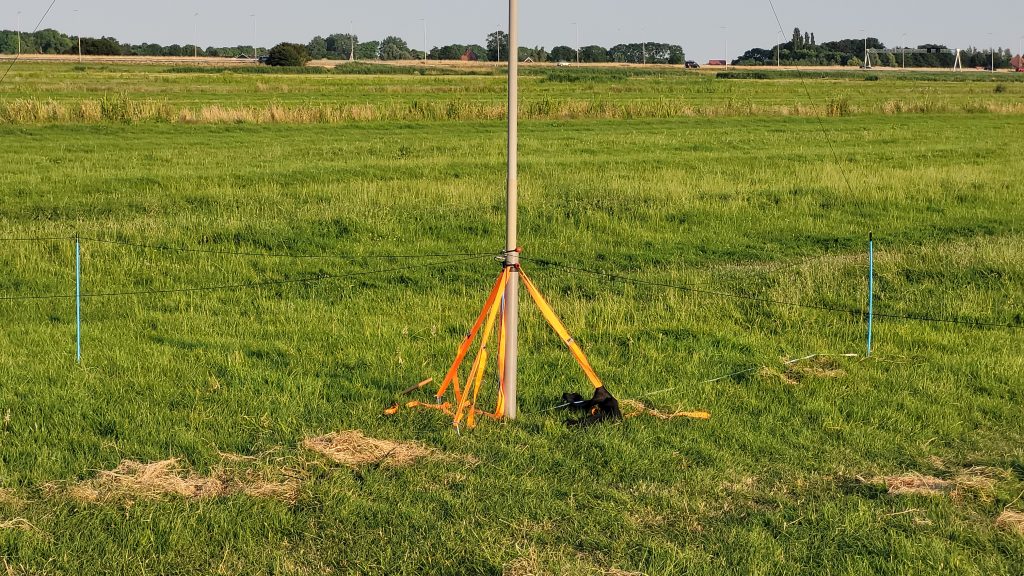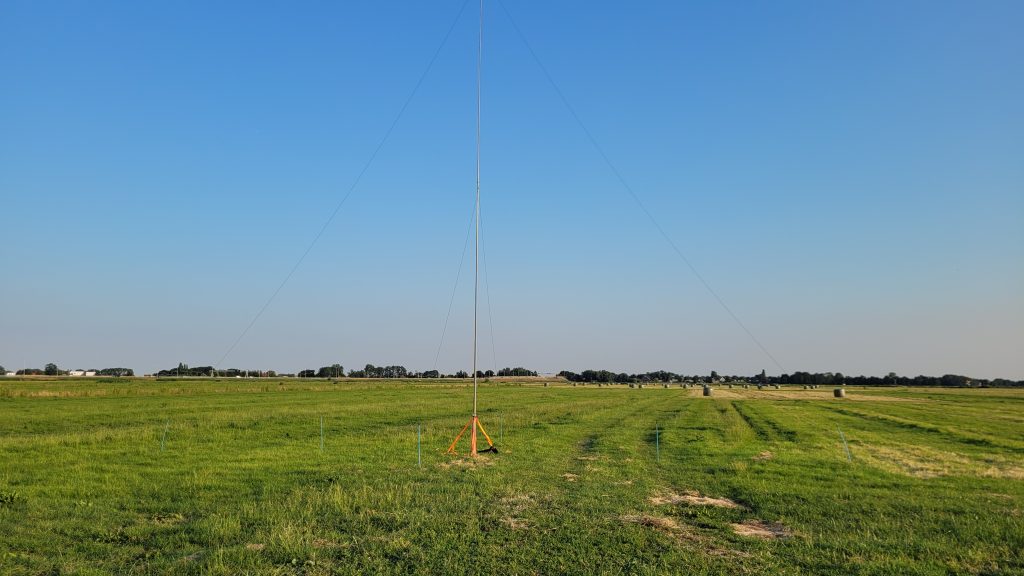I’ve always been interested in all kinds of loop antennas.
This is because closed systems are generally less sensitive to QRM and therefore receive more quietly.
What I’ve been wanting to try for a while is to make a Deltaloop for 40m.
And fed in such a way that it does not radiate flat for dx, but radiates as high as possible. suitable for NVIS operation.
What is NVIS?
NVIS, or Near Vertical Incidence Skywave, is a technique used in radio communications to establish reliable long-distance communication links over relatively short ranges, typically up to a few hundred kilometers. It involves bouncing radio waves off the ionosphere at a steep angle, close to the vertical, instead of the more common oblique angles used for long-distance communications.When radio waves are transmitted vertically towards the ionosphere, they undergo a phenomenon called skywave propagation. In this process, the waves interact with the ionized layers of the upper atmosphere, specifically the F layer, which is responsible for reflecting the waves back to Earth. By using a steep angle of incidence, typically between 70 and 90 degrees, the radio waves can be refracted back towards the Earth’s surface, allowing for reliable communication over short distances.
NVIS operation is particularly useful in situations where conventional communication methods, such as line-of-sight or long-distance propagation, are not feasible or reliable. It is commonly employed in military operations, emergency communications, and disaster response scenarios, where rapid deployment of communication infrastructure is required in areas with limited infrastructure or challenging terrain.
By utilizing NVIS techniques, communication signals can penetrate obstacles like mountains, buildings, or dense vegetation that would otherwise block or weaken radio signals. This makes NVIS an effective solution for establishing robust and decentralized communication networks within a limited area, providing enhanced reliability and coverage.
In summary, NVIS operation involves bouncing radio waves off the ionosphere at a steep angle, enabling reliable short-range communication by utilizing skywave propagation. It is a valuable technique for establishing effective communication links in challenging environments or when traditional communication methods are impractical.
What do we need?
- Space to put up a fullsize 40m DeltaLoop
- Approx 50m of wire.
- Balun, DeltaLoops have a feedpoint of 100ohm. so we need a 2:1 balun.
- A (telescopic)mast that is long enough to support the Apex of the DeltaLoop approx 11m
- Somekind of supports for forming the Delta on site.
Space
The DeltaLoop test was done at a farmers field nearby my QTH, very remote perfect for quiet testing 🙂
Wire
I have used 2 sorts of insulated wire, 0.5mm2 (20AWG) and 0.15mm2 (26AWG)
Spoiler alert!, as I use QRP power, no difference was noticed between both wires, nor bandwidth differences noticed.
Balun
The balun I used was made of a T82A-43 core (QRP use only), with 20AWG Enameled copper wire.
I used Frank’s his documentation how to wind the Balun: https://www.hfkits.nl/handleiding-1-2-balun-600-watt/
You can use any 43 type core for making these baluns.
 I have Lasercut a whole bunch of these things for field testing.
I have Lasercut a whole bunch of these things for field testing.
Mast
I am using a DX Wire, Telescopic GFK mast, it is arround 12.5m in total length.
Because of the amount of weight of the DeltaLoop, I did not use the last part of the telescopic mast, as everything gets very flex.
The Mast is put in a PVC Pipe guyed with pegs.
Supports
For supporting wire antennas on site I always like these pegs used for electrical fences used at farms:

Lets setup!
First we need to know the ammount of wire needed for our deltaloop.
Wavelength of the DeltaLoop circumfence is full wave.
Calculation is very simple:
Target frequency: 7.1MHz
Velocity Factor of Insulated Wire: Approx 97%
Formula
Physical wire length = 300 / Target frequency * Velocity Factor
300 / 7.1 * 0.97 = +/- 41m (40.98m)
Constructing
First we need to get the Apex of the DeltaLoop fixed to the Mast.
This is halve of the total wire length. at approx 20.5m.
When working with GFK telescopic masts I use these Silcone Wristbands a lot.
Easily to wrap them arround, and the stick like crazy. and will not slide.

Feedpoint
A DeltaLoop can be fed in several ways to let it behave(radiate) differently.

For our situation whe need the highest possible radiation angle, In this case Loop B,C and G are the ones we need.
In my situation I chose Loop C, this because the feedpoint is exactly in the middle of the lowerside of the Loop and in center of the Apex.
In this way it is easy to mount on the mast.
It is hard to see, But you can see the 40m DeltaLoop, and inside this loop, there is another DeltaLoop for 20m 90degrees in offset.
Both Loops are connected to the same feedpoint!, because the 20m loop has a high impedance when using 40m, and vica versa, they almost have no effect to one of each other.
 The Verdict!
The Verdict!
Awesome!, As expected this loop is Quiet!! and local signals are LOUD!.
While experimenting with both loops I managed to surprise several stations with the signal I put down with only +/- 2.5W QRP power!
I also tested with Winlink/Vara HF.
All European Winlink stations on 40m worked perfectly with very high data rates with less than 1W.
So, do you want to work a lot locally at 40m, say a radius of 1000km? and you have some space to place such a construction?
Then definitely install a DeltaLoop.
In the past I have experimented a lot with various NVIS wire antennas, such as Inverted V’s, but this works much better.


